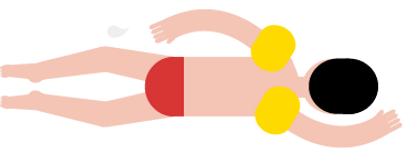


Chapter 1: Taking Ownership of (Professional) Learning

Today we hear words such as "agency", "empowered" and "learner-driven" in relation to students. The words represent a shift in transmissionist pedagogy with the goal of student ownership of their learning.
In our opinion this will not happen unless the goal (ownership) is the same for educators. What Ann Lieberman notes in her research entitled Practices that Support Teacher Development, is as true today as it was when it was first published 20 years ago.
"In the view of traditional staff development, workshops and conferences count, but authentic opportunities to learn from and with colleagues do not. Traditional venues of large group instruction outside the school are taken as almost the only places where adult learning goes on, whereas learning inside of school as an integral part of school life, or as part of a larger network of people struggling with teaching and learning problems, is neither supported nor taken seriously."
In other words we are not seen as professionals able to direct our own learning. In many cases someone else makes decisions about what we'll learn and how and when we'll learn it. It's ineffective (beyond surface compliance), and it isn't what our students (or we) need.
In this section we encourage you to appropriate your learning if need be. It's time for all educators to actively drive their own professional learning.

Pause and Reflect
We've compiled the pause and reflect questions from the book into a Google Doc.
Feel free to make a copy and work inside the document, or record your thoughts using another form of media.

"What everyone appears to want for students - a wide array of learning opportunities that engage them in experiencing, creating, and solving real problems, using their own experiences, and working with others - for some reason is denied to teachers."

Wade In:
It's Like Yoga
Take a moment to read this blog post on the five ways the ISTE Standards for Educators are like yoga. And then think about how you can apply them to your own practice.

Shallow Swim:
Own It!
Take a moment to review John Spencer's blog 16 Ways to Own Your Professional Learning. We love that it begins with self reflection - Are You Tired or Actually Injured? - before exploring ways to own your learning. Spencer acknowledges that "...your professional identity is bigger than a set of skills. It involves values, ideas, and beliefs; which is why professional learning can often include paradigm shifts."
The list Spencer provides is by no means exhaustive but it's a great diving off point. If you apply one of his suggestions, please share with us.
Learn how at Next Steps.
Deep Dive:
Teachers Create What They Experience
This Tedx Talk by Katie Martin reiterates our stance in the book: that educators must drive their own professional learning.
Watch the video, and explore her blog post: Training versus Learning: Changing the Paradigm of Educator Development.
Consider where you, your colleagues, your school and/or your district are in their understanding of what professional learning means. How can you share this message? What might you do to model this type of professional practice?
“Do as I say, not as I do” needs to stop. Professional learning needs to mirror the #collaborative, #iterative #inquiry process we want to see in our classrooms. #DiveIntoUDL



).png)
